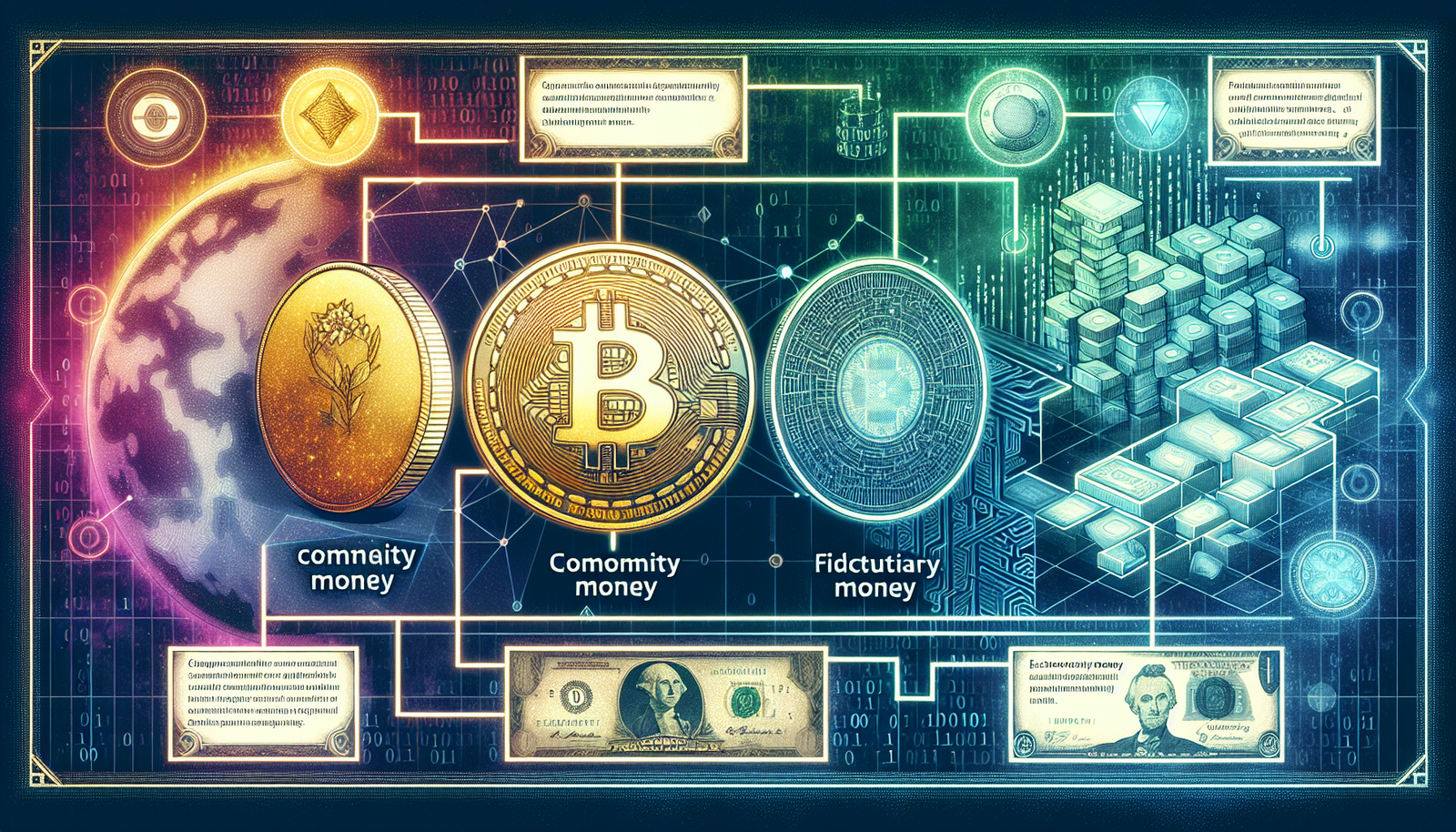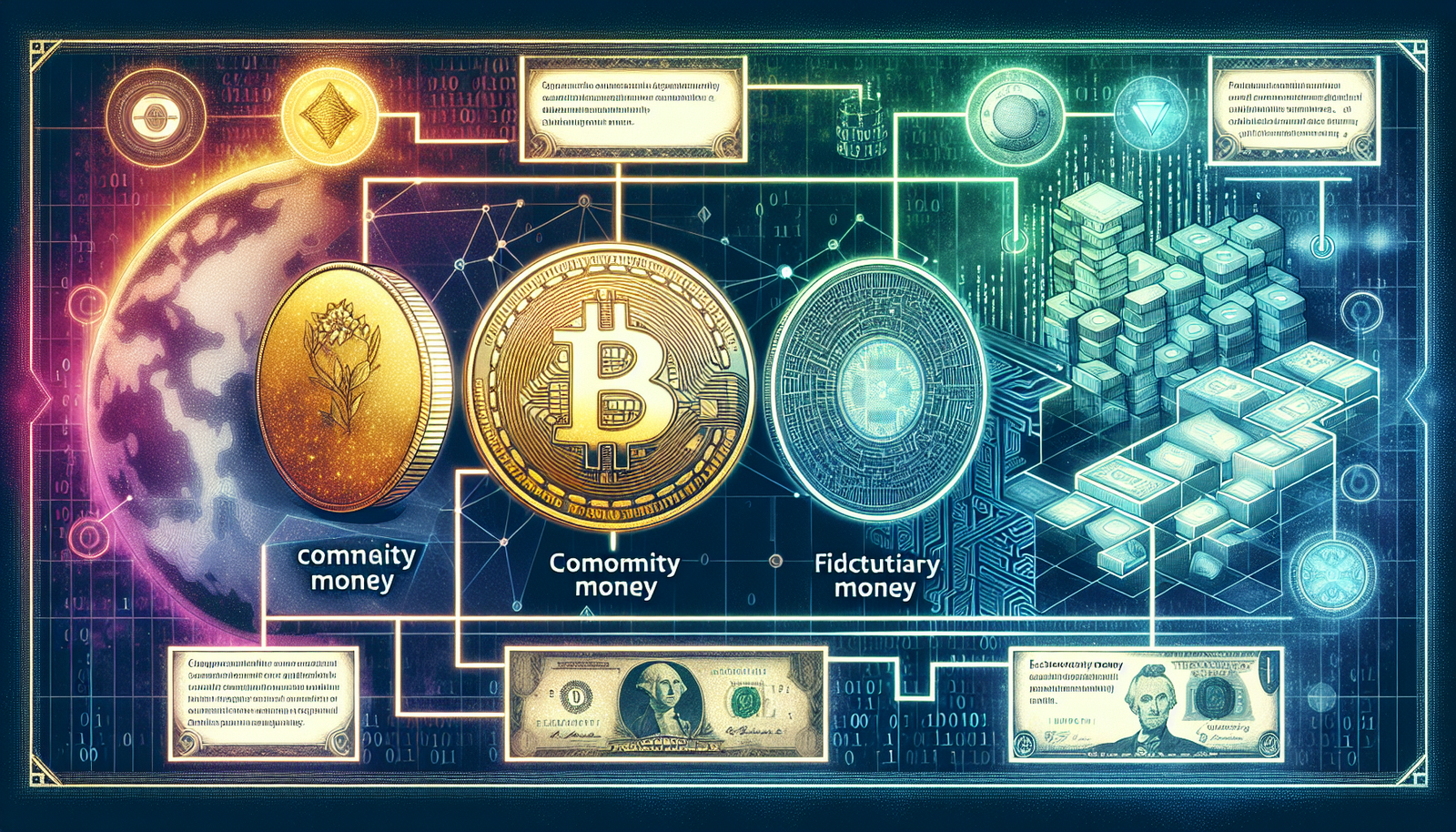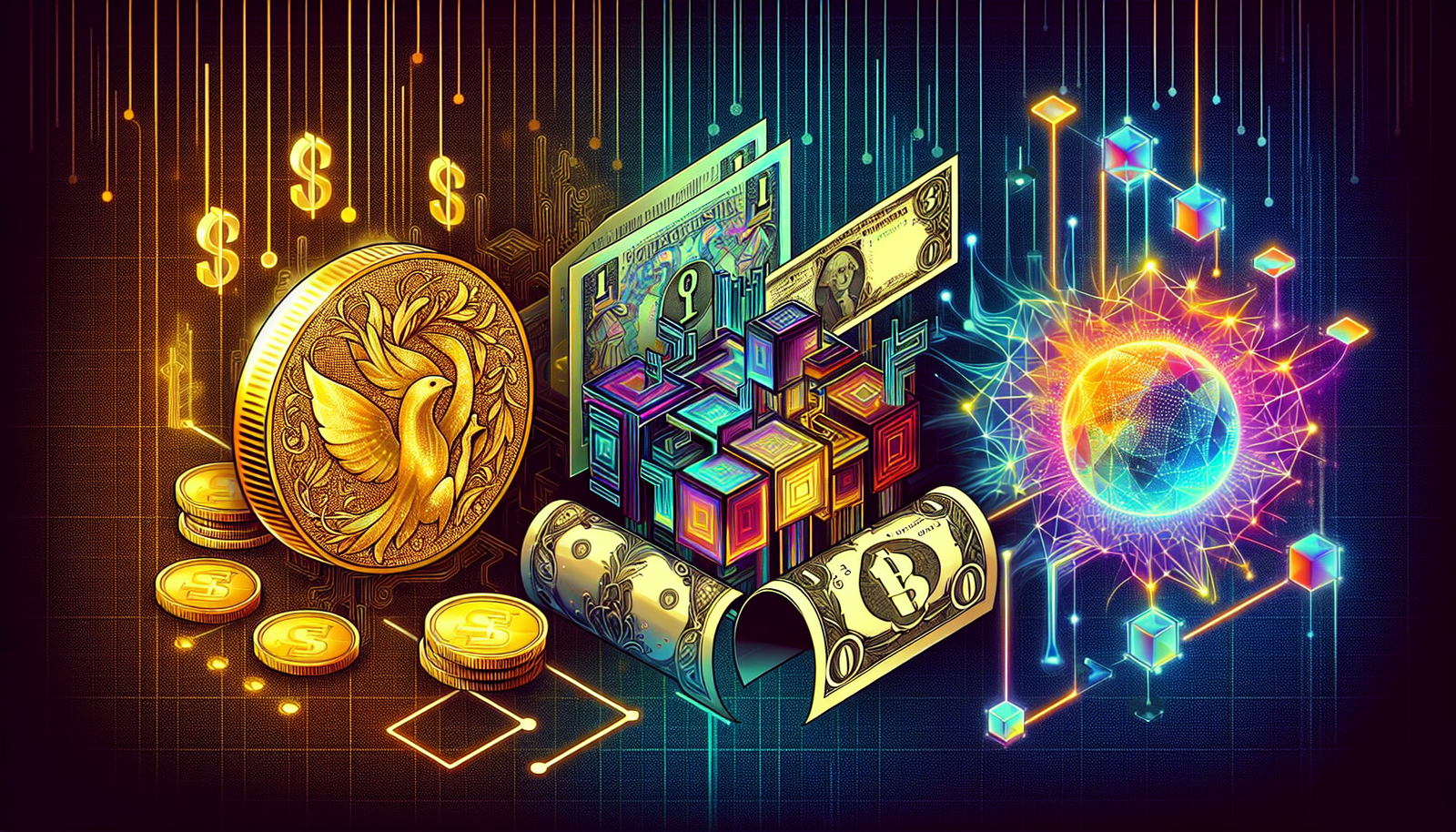
Brace yourself for a vivid expedition into the rich landscape of economics, as you embark on a journey bounded by the vibrant colors of monetary expressions. “Types of Money in Economics” serves as your guide as you navigate through this complex web, artistically threading through the tapestry of economics. From commodity money to representative money, each form carries its unique heartbeat that pulsates through the financial markets and eventually your pocket. This article illuminates the intricate details of this very essence, retelling the evolutionary tale of how money has morphed over time, shaped by societal needs and technological advances. Without further ado, fasten your seatbelt because it’s time for your immersive exploration into the dynamic world of money types in economics, a world where every note and every coin tells a story.

Commodity Money
Definition and Historical Background
Dive back in time and you’re sure to stumble upon commodity money. Essentially, commodity money is a type of good that functions as currency. This type of money takes its value directly from the commodity of which it is made. The commodities can be anything widely accepted in trade – gold, copper, silver, tea, and tobacco have all had their turn at being a means of exchange. The history of commodity money dates back to the earliest civilizations, where it played a significant role in trade and commerce, serving as a system of barter.
Advantages and Disadvantages
The use of commodity money is riddled with advantages and disadvantages. An edge it holds is its intrinsic value. Commodity money is valuable in itself, creating a stable exchange rate. However, it also comes with its challenges. One such is its susceptibility to wear and tear, making it less durable. It also poses difficulties in transportation due to its bulk and weight.
Examples in Modern and Ancient Economies
While virtually extinct in modern economies, commodity money was pivotal in ancient economies. Coins made from precious metals, including gold and silver, served as a common form of commodity money. In contemporary society, a faint echo of commodity money persists in gold and silver certificates, presuming they can be exchanged for a specific amount of metal.
Representative Money
Concept and Explanation
Imagine a scenario where your money represents a tangible asset and can be exchanged for it at any given time. That’s representative money. This kind of money involves the use of symbols or certificates that are guarantees for a specific quantity of a recognized standard or measure, like gold or silver.
Advantages and Disadvantages
A key advantage of representative money is the security it provides. It has inherent value and isn’t liable to hyperinflation since its value is anchored by physical assets. However, it’s not without its downsides. The storage and transfer of large amounts can be cumbersome and risky due to its tangible nature.
Role in Past and Present Economies
From British pounds being backed by gold to US dollars being exchangeable for silver, representative money has shaped significant moments in economic history. However, with precious metal standards being abandoned, the concept has somewhat faded, giving way to fiat money.
Fiat Money
Concept and Explanation
Meet fiat money. This is currency, printed by governments, which does not have intrinsic value or is not tied to a physical reserve. It derives its value from the trust and confidence of the people who use it.
Benefits and Drawbacks
Fiat money’s main benefit is its convenience. Being lightweight, transportable, and easy to handle, it’s the most widely used form of money today. However, it’s susceptible to inflation if the government produces too much, devaluing the currency as a result.
Role in Global Economies
Fiat money is a principal player in modern global economies. From the US dollar to the Euro, it’s the omnipresent, dominating form of money.
Inflation and Fiat Money
With great power comes great responsibility, even for fiat money—its creation must be balanced to avoid inflation. Therefore, central banks manage the supply of fiat money, striving to stimulate the economy without causing inflation.

Digital or Electronic Money
Definition and Understanding
Welcome to the era of digital or electronic money. This form of currency exists only in digital format, not physical, and is used in transactions occurring over electronic systems.
Advantages and Disadvantages
The convenience and speed of digital money transactions offer a significant advantage, allowing for immediate pay with just a tap or a click. However, it’s dependent on technical infrastructure, and cyber threats like hacking and identity theft are potential disadvantages.
Role in Current Economies
In a digitally advancing world, digital money is quickly becoming the backbone of many modern economies, promoting cashless transactions and propelling the rise of e-commerce.
Effect on Banking and Financial Systems
Digital money is revolutionizing banking and financial systems. It offers superior tracking of funds, automated payments, and real-time transactions, ultimately improving efficiency and transparency.
Cryptocurrency
Understanding Cryptocurrency
Behold, the mystery of cryptocurrency – digital or virtual currency that uses cryptography for security. It operates independently from a central bank and, the most famous, Bitcoin, is just the tip of the iceberg.
Advantages and Disadvantages
Cryptocurrency promotes fast, global transactions with a certain level of anonymity, but it can also be vulnerable to price volatility, regulatory issues, and potential misuse for illegal activities.
Examples: Bitcoin, Ethereum, and others
Bitcoin, born in 2009, was the first and best-known cryptocurrency, followed by others such as Ethereum, Ripple, and Litecoin.
Impact on Global Economy
Cryptocurrencies are challenging traditional finance, potentially reshaping global economies by tackling barriers such as high transaction fees and slow processing times.
Bank Money
Definition of Bank Money
Welcome to the world of Bank Money, also known as commercial or checkbook money, created by commercial banks through granting loans and making payments.
Creation of Bank Money
When banks approve loans for their customers, this simultaneously creates credit and deposits in the banking system, essentially generating new money.
Role and Impacts in Economy
Bank money acts as an engine of economic growth, aiding businesses in their expansion and purchasing power.
Regulation and Control
Bank money growth is regulated by central banks to maintain economic stability and avoid inflation.
Phew! That’s a lot, but we’re not done yet.
Commercial Money
Concept and Definition
Commercial money is money created within the commercial banking system, often evidenced by instruments like checks.
Creation and Usage
When a bank lends money to a customer, the loan becomes a deposit in the borrower’s account, effectively creating commercial money.
Impact on Business and Economy
The creation and usage of commercial money supports businesses and economies as it circulates, generating economic activity.
Relationship with Central Banking Systems
Commercial money interacts with central banks, which regulate its creation to manage liquidity and stability in the economy.
Near Money
Understanding Near Money
Near money assets, like savings accounts and treasury bills, are highly liquid and can be quickly converted into cash.
Examples: Savings Accounts, Treasury Bills, etc.
These assets often have low risk and provide a stable return, albeit generally lower than other investments.
Role in Liquidity and Economy
Near money plays an essential role in financial liquidity and stability as it ensures funds can be readily available in times of need.
Relationship with Money Supply
Near money is part of the wider money supply, influencing monetary policy and financial stability.
Hard and Soft Money
Understanding Hard and Soft Money
Hard money refers to funds donated directly to political candidates while soft money indicates donations to political parties for “party-building” activities.
Comparison: Advantages and Disadvantages
A crucial advantage of hard money is its transparency since contributions are thoroughly regulated and reported. However, it’s restricted in terms of the amount one can donate. Soft money, though providing a limitless amount in donations, lacks transparency and control.
Impact on Global Economy and Politics
Hard and soft money significantly impact politics, influencing elections and policy-making, which in turn, shape economies globally.
Examples and Contexts
Hard money was notably used in the Bush vs. Gore campaigns, while soft money has often been used unethical “dirty politics” tactics – highlighting the need for comprehensive political finance reform.
Time and Demand Deposits
Definition and Functioning
Time and demand deposits are two types of deposit accounts in banks. Demand deposits can be accessed anytime, while time deposits, like CDs, yield better interest but require a fixed term.
Comparison: Advantages and Disadvantages
Demand deposits offer liquidity at the cost of lower returns, while time deposits provide a higher return at the cost of limited accessibility.
Role and Impact in Banking Systems
These deposits generate funds for banks to lend, determining banking systems’ liquidity and profitability.
Influence on Economic Stability
Time and demand deposits can influence interest rates, credit creation, and overall economic stability.
Congratulations! Now you’re well-versed in the sphere of money types in the economic world.

